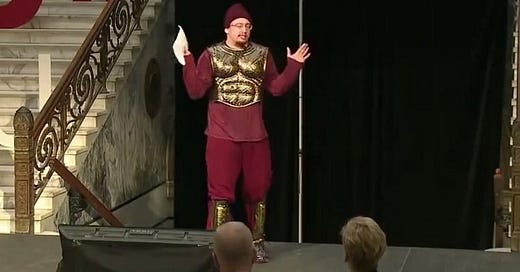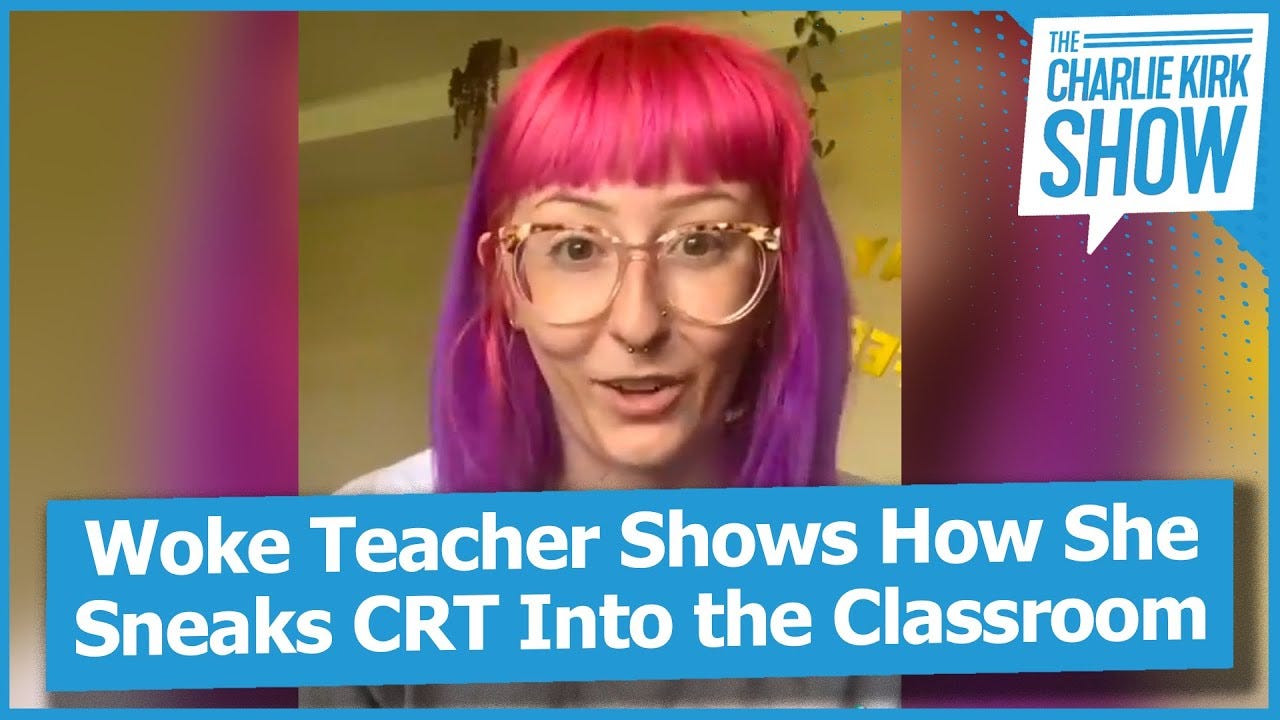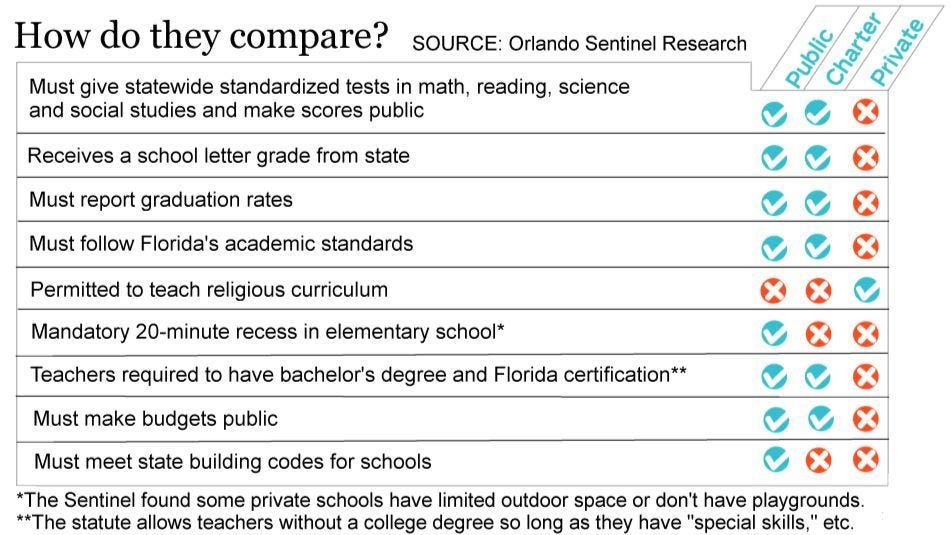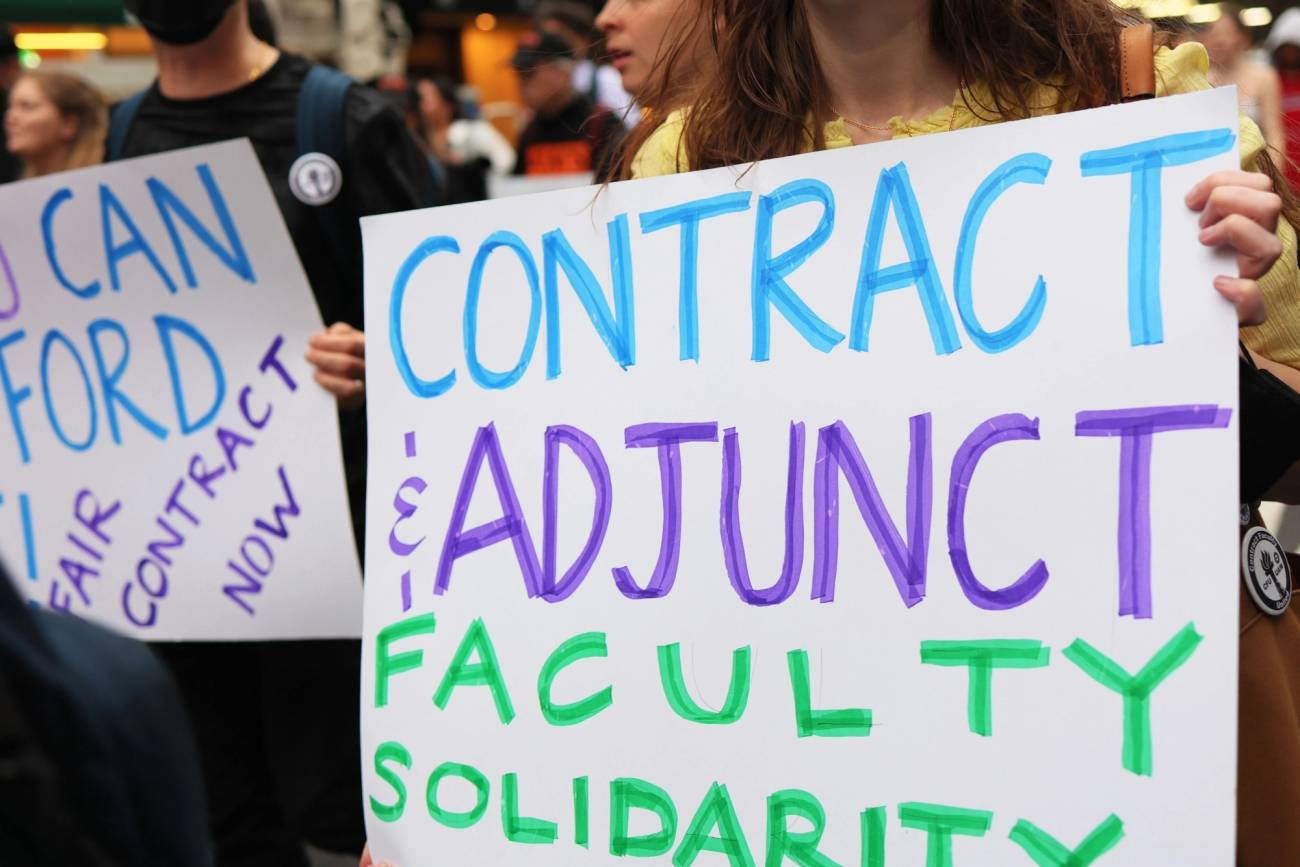This essay, part IV of my series, is all about predictions. What follows is my prognosis for education in America based on how I feel a number of existing trends will play out. The particular focus of my series is teaching as a rightist and the spaces most conducive to that, and in order to assess the likely outcome of the ideas outlined in part III, it will be necessary to look at the current and likely future social contexts in which they might be implemented. This involves looking at data, an interpretation of the national and relevant local political scenes, philosophical analysis, and some intuitive speculation.
“So we looked at the data . . . and what we found surprised us.”
The thesis I will advance in what follows is that the single greatest event impacting the future of education in America was the collective Covid lockdowns that followed from the mandates of state and federal governments. This in itself is not novel, but I think the effects of the lockdowns will be more profound than people realize. A spell was broken. Generations of Americans have passed through public schools as the Cathedral’s prime locus of indoctrination. Even those who came up outside of it had to defer to its cultural power. Even the most rebellious were conditioned to believe it had always been so, and always would be so. Every mainstream educator agreed that public education in state schools was vital to American democracy, by which they meant managerial neoliberalism. It was the acid bath the dissolved differences in local culture, religion, and race and channeled the creative energy of young people into distinct categories in the globalist economy- for the majority, consumers; for some, managers; for a few, planners and architects.
The fatal flaw in managerialism, though, has finally manifested itself. Managers are good at organizing, at planning, and at achieving quantitative outcomes. It’s why they fear AI as their successor. What they cannot do is imagine. Managerial control is premised on its own inevitability. As such, in their latest attempt to ratchet up their control over society, a move necessitated by the nature of their power, they went a step too far. They thought they could shut down the public schools in the interest of a wider push to test and adjust the limits of public compliance with their mandates. They believed that, once their manufactured crisis had passed, people would go back to their lives as they had before, save with greater deference to the managers who had steered them through the storm. What they didn’t understand, what they couldn’t understand, is that in the end, education, even public education, is premised on relationships. For the managers, education is inputs and outcomes; a certain measured mass of curated and standardized information is given, students are tested on their absorption of the same, and the process is repeated (or more often, the outcomes are simply manufactured) until acceptable numbers can be reported up the chain. Thus, virtual learning would work fine. For students and their families, however, school remained, if perhaps only in some atavistic, subconscious way, a place and a group of people, from which they were now disconnected. And it is precisely the nature of that disconnect that will shape the future of education.
A spell was broken. Parents discovered in many cases, or rather, the knowledge was forced upon them, that what they thought they remembered about school bore little relation to what was on offer in their children’s classrooms. In some instances, the nakedness of the indoctrination, made possible by the indifferent public a previous generation of teachers had manufactured, was now broadcast via wifi onto laptops on their kitchen tables, and could not be ignored. But while the woke content got the press in normiecon outlets, it was the general soulless mediocrity on offer that was most repulsive. Here I must speculate; I have no data on this, nor do I think it possible to collect such, but I really believe that what struck a chord among many parents was the visceral connection they were able to make between the sterile and artificial imitation of education on offer for their children and the bugman lives they themselves lived. A man or woman who is a pure creature of the system, who lives to consume, kept going through amusements, SSRIs, and a Hegelian synthesis of novelty and routine (nightly binge-watching), is still a being made in the image and likeness of God, and some small part of even the most debased and denatured NPC knows better than to want others to follow after him (which I suspect is a major reason for the decline in birthrates). Forcing people to face this created a great, and largely unrecognized, spiritual crisis. In meeting it, parents were forced upon their mental, material, and most importantly spiritual resources, and in many cases, they discovered something important about themselves and fatal to the system: they didn’t need it, and were in fact better off without it.
Even Charlie Kirk is becoming mildly critical . . . a bit.
I believe a critical mass is approaching, if it has not already been reached. Public schools, already facing declining enrollments due to lower birth rates, saw a Covid-mandate-fueled decrease of around 1 million students from 2019-2022. The numbers have not rebounded and are expected to continue to decrease for the foreseeable future. Those who can get out have done so, and have gone into private education or some variety of homeschooling. The latter term can be nebulous, but at the low end something close to 5 million students are now taught at home in some way, which amounts to between around 5-10% of students. Coupled with those in private school, around 10% of the school-age population even before Covid, and you have nearly a fifth of American students in some form of non-traditional education, perhaps more when you consider that charter schools are generally counted as public for statistical purposes.
It is difficult to imagine how the public system rebounds. While it remains the choice (or default) of the vast majority of families at the moment, one wonders how much political support there will be for continued increases in spending for the public system as the population ages, childlessness becomes more and more common, and between a fifth and a quarter of the population find themselves paying twice for education, tuition and property taxes for the system from which they were driven. Even as public schools are shuttered around the country, there is apparently little interest among those running the show in any kind of reform that might make the schools attractive or even accommodating to those who have departed. There seems to be a kind of pedagogical Curley Effect here; the harrying of conservatives, Christians, or those otherwise not on board with the revolution is the point. One must remember that the sorts of people who end up in administration and policy are often those without the patience or ability to teach and have Peter Principled their way along a cursus stultorum to their place of final incompetence; the people who promote them think woke, stabbings, and standardization are laudable goals, so that’s fine by them. For a manager, the problem with complaints is that someone is complaining. Once the noise stops, the machine can be considered to be running smoothly.
Oh Dilbert, you numb the pain of life.
One might wonder why citizens would continue to support paying for public schools when they either have no children or do not send their own to that system. The answer lies in the little remarked-upon fact that states have been funneling Danegeld to parents for years to keep the peace. Most states have various sorts of tuition credits, vouchers, tax breaks, or other provisions to offset the cost of private education for families seeking to leave the system. So long as they are provided the resources to continue to send their own children to private schools, microschools, or homeschool, there is little incentive for parents to evolve into a constituency to cut off the flow of property taxes as such. However, as the days of easy money come to an end, one can envision hard choices having to be made, and parents not at all interested in choosing to pay for something they do not use and that they regard as inimical to their values.
Some have speculated that the move away from public education is rooted in hatred of whites for other races. Certainly this is the explanation given by the public school system for the decline in enrollment (and, in fact, is their explanation for everything else as well). What is interesting is how diverse the abandonment of the public system actually is. For example, around 10% of white children are homeschooled, along with 9% of Asians. But a whopping 16% of black children are taught at home. Nearly all of this increase happened as a result of the Covid mandates. The states with the highest number of homeschooled students share the characteristics of being politically purple and racially diverse, places with a large amount of out of state in-migration and hollowed out regional cultures; North Carolina by itself accounts for nearly a third of America’s homeschoolers, followed by Florida, Georgia, and Virginia. Together they represent three-quarters of America’s homeschool population. It should go without saying that these states all have the framework of voucher and tuition credit systems that make for a high rate of private school attendance as well. This is the expression of the central contradiction of the neoliberal state, that the attempt to deracinate and homogenize a population while also valorizing diversity and separatism results in a hollowing out of inherited identities in favor of intentional, ideological sorting.
This checklist indicates Florida is pretty based, which is the most important assessment under my future system.
It is in the spaces –legal, cultural, economic, etc.- created by these states and those like them that the future will be born. There will almost certainly be some form of public system for as long as the current managerial neoliberal order limps along, and it will be just as, if not more expensive even as it contracts under the conditions previously noted. One of the most important factors in all of this is the role these private educational structures will play as signalers of competency and character in the wider economy and social system. In other words, how will the innovations at the primary and secondary level, trending toward decentralization and decoupling from state control, affect tertiary education and its role as an engine of credentialism?
Universities face many of the same challenges as schools at the lower levels, fewer incoming students, cultural conflicts, etc. Unlike primary and secondary schools, however, colleges have been able to leverage their stranglehold on credentials signifying middle-class compliance to avoid some of the consumer revolt faced by elementary and high school systems. It is not really possible for things to continue as they have, however, given the reality that this is the last gasp of the free money era that fueled the student-loan funded spending bacchanal enjoyed by the managerial elites’ educational branch over the last forty or so years. Even with borrowed money public universities are out of economic reach for increasing numbers; smaller private colleges are shutting down or merging with others, with only the most elite schools still able to trade on their social cachet to buck trends. Universities have made themselves indispensible and unaffordable at the same time. At least one of those things must necessarily change.
At the same time, decreasing enrollment has not motivated anyone to pump the brakes on administrative hiring; books are generally balanced by treating faculty as a necessary evil to be stripped to the absolute minimum. The exploitation of contingent faculty is a national disgrace. Those coming out of graduate school must know that the prospect of life as a tenured professor is increasingly remote, indeed, even full-time academic work under any conditions is becoming scarce. Listen closely, and one can hear the angry, volcanic rumble of Turchin’s surplus elites, ready to bury society in ashes. However, I believe there is a way to reconcile all of these disparate elements into a single educational paradigm that satisfies both the desire of many to escape the managerial system while retaining those useful elements that will facilitate a transition into a more workable system.
“Sorry, we spent that money on ‘Guess my Gender’ buttons.”
Let us return to the microschool of part III. The current system produces a significant number of trained academics coming out of graduate schools with no real prospects in the modern neoliberal university. This is especially true of those possessed of disfavored demographics or ideology. The problem is its own solution; those who are amenable to rightist views will come together as the faculty of the envisioned microschools. There is an enormous pool of academic talent that could be harnessed to more productive ends at an earlier level in the system, an early enough level to create a critical mass for wider social change. Professional sports teams find their prospects as early as middle school, so too should those looking to revolt against the modern world. In all things every effort should be made to sidestep or coopt the credentialing process as it now exists. Our MA and PhD teachers would secure agreements with those colleges looking to boost enrollment by acting as adjuncts teaching on-site dual-enrollment classes at the microschool. The invisible college would come to replace the first two years at State U, effectively becoming a junior college itself while all the time maintaining a strong reactionary culture. No more sending kids off from a sheltered round of Abeka books for the fall of freshman year only to have them return for the summer with new piercings, pronouns, and politics. Our students will head into the system philosophically and spiritually mature, perhaps making some frens along the way.
Building upon this, as the invisible college takes up its envisioned role as local power hub, the higher reaches of education will open up. Some local liberal arts college will fail, only to be rescued by those with new ideas and community funding. This college will be integrated with the regional network of microschools, and with other colleges similarly resurrected. What they will initially lack in prestige and social cachet they will make up for in affordability, relevance, and amenable culture. The dual purposes will be first of all acculturation and secondarily the acquisition of demonstrable competencies in a more abbreviated timeframe than the traditional four-year program. Ideally the school will also affiliate with a local trade school to seed its culture into the working class of the area, with the attraction of inexpensive training and the prospect of entering a network of employment and patronage. Once it becomes clear that Invisible University graduates get jobs in the local and regional economies, admission will become sought after, and this parallel system will come to displace the more cumbersome older system of four-year degrees and indoctrination, first locally, then regionally, then nationally.
To those who would call this impossible, I would point out that where even the oldest and largest universities now stand was once a howling wilderness; there was nothing inevitable about their inception, and nothing is promised regarding their persistence. They exist because men of vision willed them into being, and were preserved by men of culture who revered their past and cared for the future. That sort of person is inimical to managerial liberalism; his Cathedral is a liminal space with no value beyond immediate selfish use, an educational motel where one vacations for a few years before leaving with some souvenirs with which one hopes to impress others. We will have the schools we want if we become the sort of men who build them. If not, what will we say when we meet our ancestors, that we trembled before their example, and like the unprofitable servant, buried the talent we were given? Scripture tells us our fate in that case. Let us do what we can, rise to the challenge, and if we must fail, let us do it in the attempt rather than in the longing.
Marsilio Ficino approves.











I like your insight a great deal. To think we are forever trapped with lazy and overpaid teachers is folly. One aspect that will be an issue will be the two major camps of homeschoolers. Anecdotally, I find there are those families whose kids are super bright or parents very educated who pour themselves into the homeschooling experience. Then there are those who do minimal work and simply do so in order to avoid behavioral problems their kids might have at school or to satisfy some neurotic need to protect/control. I believe the former group will be in great demand in the marketplace, but there will need to be an objective measure to differentiate the kids who went through a rigorous program and those whose parents were largely checked out and letting them just do Khan Academy on their own.
Covid did a number on private schools too. One Catholic school close to me saw rapid increases in enrollment from rich liberals who wanted to get away from the nonsense public school Covid policies (that they voted for). Unfortunately, many stayed and used their clout to get a couple of solid teachers fired for wrongthink. In retaliation, the principal resigned and and the Catholic parents who actually want their kids to hae a Catholic education left en masse for an adjacent Catholic school.
Contrast this to a Catholic college I know who had a student who did not take the material seriously and got herself pregnant. She was dismissed from the school along with the father, and the girl's family, who wanted to send another kid to the college was essentially blacklisted. This might sound harsh, as it seems the girl is just the screwup in the family and the rest are fine, but the college is doing what it has to to maintain its moral identity, and that requires hard choices.